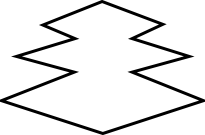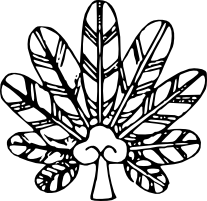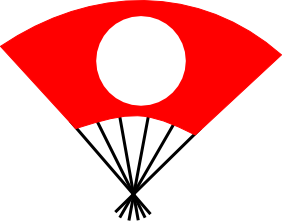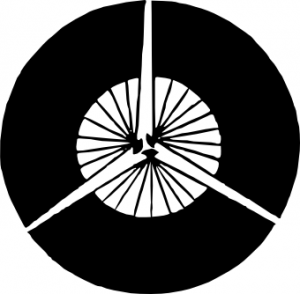Recreational research into Feudal Japan
Archive for June, 2010
Element of the Week: Chestnuts, Rhombi, and Caltrops
Jun 28th (a Sembu (先負))
This week we have a simple element that has some interesting characteristics. Hishi (菱) can be translated as the rhombus/diamond shape, a type of water chestnut, or as a caltrop (the weapon). In mon, it is depicted as a geometrical rhombus. This is the same element used in the logo for the Mitsubishi corporation, which was named for the three (mitsu) diamonds in its crest. Here are two versions of a three stacked (literally, three stories) hishi crest, a version used by Ogasawara Tadazane in the 17th century(SH:63) and a more modern version.(IEJFC:312.13)
 <img src="http://fireflies.xavid.us/wp-content/uploads/2010/06/3diamonds-300×242.png" alt="" title="Three Diamonds" width="300" height="242" class="size-medium wp-image-300" srcset="http://fireflies.xavid.us/wp-content/uploads/2010/06/3diamonds-300×242.png 300w, http://fireflies prendre le viagra.xavid.us/wp-content/uploads/2010/06/3diamonds.png 443w” sizes=”(max-width: 300px) 100vw, 300px” />
<img src="http://fireflies.xavid.us/wp-content/uploads/2010/06/3diamonds-300×242.png" alt="" title="Three Diamonds" width="300" height="242" class="size-medium wp-image-300" srcset="http://fireflies.xavid.us/wp-content/uploads/2010/06/3diamonds-300×242.png 300w, http://fireflies prendre le viagra.xavid.us/wp-content/uploads/2010/06/3diamonds.png 443w” sizes=”(max-width: 300px) 100vw, 300px” />
Three stacked diamonds
This is an example of a highly stylized plant motif, and also, as a caltrop, a military connotation. This particular arrangement also has a similar shape to the character for ‘king’ (王/ō), and thus had auspicious connotations.(ja.wp:小笠原氏)
Motif of the Week: Folding Fans
Jun 14th (a Senshō (先勝))
A while back we talked about one type of fan used in mon, but the type of fan everyone associates with Japan is the standard folding fan. This was a very popular motif in mon through the centuries. Its origins as a design motif date to the Heian period (794–1185).(Dower:110)
Here are two folding fans from our collection of 15th century provincial samurai mon.(KJ:7) The one on the left is a cypress fan, which was part of the traditional court costume, with the number of slats used indicating the status of the holder.(Dower:110) The one on the right is of feathers. It’s stylistically related to the hemp palm mon, and is associated with tengu, the mythical “bird goblins” who would trick mountain travelers with illusions, and from there mountain asceticism and certain temples and shrines.(Dower:111)
A simple folding fan design with the sun-circle motif was used by Satake Yoshinobu at the Battle of Imafuku in 1614, in the early Edo period.(SH:H9,62) This style of papered fan, optionally with design, became the standard version of the folding fan for mon. This particular version is interesting because it breaks the standard two-color rule for mon, which would soon become inviolate, by using three distinct colors: black, white, and red.
Around the same time, we have a three-fan design used by Matsudaira (Okochi) Nobutsua, who we mentioned last week, at the Shimbara Rebellion in 1638.(SH:63) Making circles of fans is similar to the way circles would be made of some plants in mon.
Modern fan mon are very similar to these early Edo designs, but with more realistic handles that hearken back to the earlier fans we have here.(IEJFC:52.2)
Mon of the Week: Ladder
Jun 7th (a Butsumetsu (仏滅))
As time progressed, the daimyō gained power, and the samurai class came into its own in the Sengoku Period, mon became more universally used for identification among samurai, and the variety of mon used increased. While other forms of identification heraldry were used, including a wide variety of giant objects on poles, mon had the advantage that they could be replicated quickly, used on a wide variety of items (banners, curtains, armor, shields, and personal items), and could be varied easily in color1, background, or placement to represent different divisions of an army.(SH:24) Because of the widespread use of mon and the greater number of surviving records, we have evidence, both written and pictorial, for more mon in the Sengoku and Momoyama periods.
Even as the Edo period approached and mon became more stylistically consistent, they still weren’t as uniform as they later became. For example, while the modern image of mon generally has them about as tall as they are wide, today’s mon doesn’t follow that at all. Then again, it makes sense for a ladder to be tall. Ladders made good mon for several reasons: a simple design, ability to vary rung numbers to create variations, and a shape that mirrored the tall banners often used in battle. It may have also had auspicious connotations of rising in the world.(Dower:118) The ladder mon was used by Makino Tadanari (who used 7 and 10-runged ladders) at the Battle of Osaka in 1614–15 and by Matsudaira (Okochi) Nobutsua (who used an 8-runged ladder) in the Shimbara Rebellion in 1638.2 This latter ladder is shown here.
Here is a modern-style, more square version of the ladder mon. While tall ladders are still in use, they often use a more three-dimensional design than earlier ladders.






